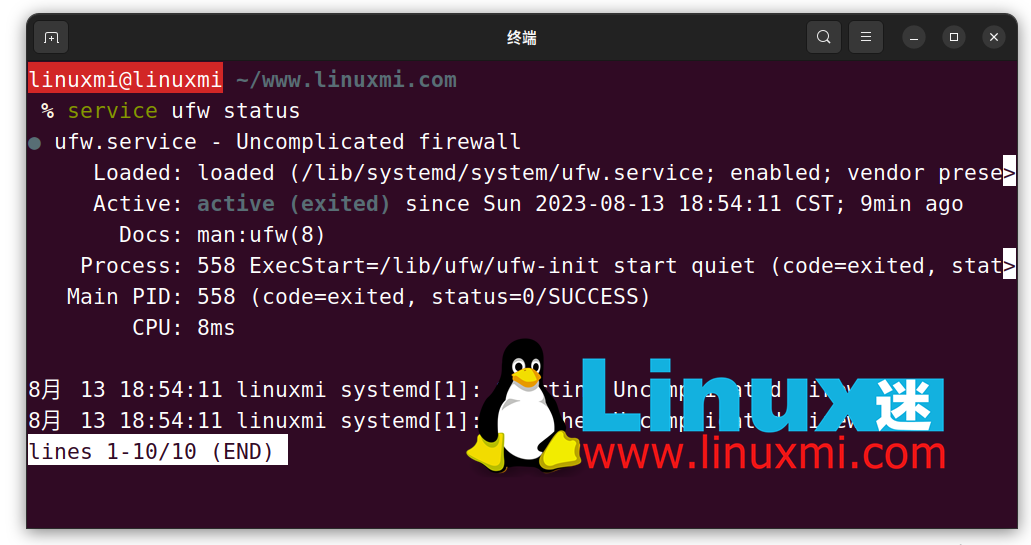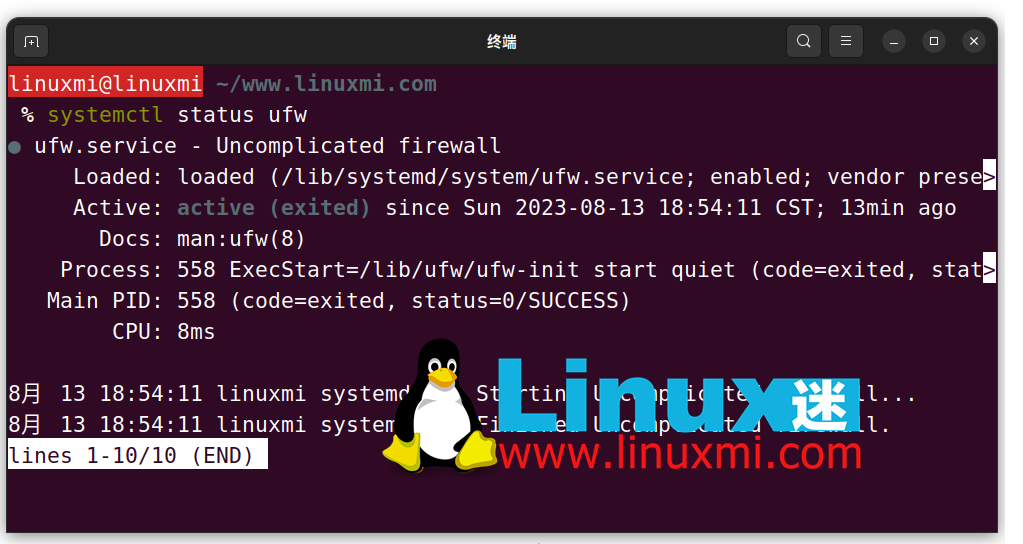
In Linux, service and systemctl are two crucial and very similar commands. Their similarity can easily lead to wondering how they differ and whether they can be used interchangeably.
Understanding the details of service and systemctl will enable you to use them flexibly.

Use the service command to check the firewall status
In Linux, the service command is a wrapper script that allows users to easily configure and interact with system services. It precedes systemd and works primarily with scripts located in /etc/init.d.
Although systemctl has largely replaced service's previous importance, it remains relevant through many legacy features.
The transition of the related init system from SysVinit to systemd was controversial, but increasing challenges with the functionality of the original init system made this transition necessary.
systemd starts services in parallel, rather than serially, giving it faster startup times than SysVinit and providing slightly more sophisticated control of system daemons via the command line interface (CLI).

Use systemctl in the terminal to check the firewall status
Similar to service, systemctl is a very versatile command that allows you to enable, reload, start, stop, and check the status of services running on a Linux system.
systemctl acts as an easy-to-use and powerful interface for configuring files in systemd. For example, using systemctl can disable a service on startup with just one or two commands.
systemctl is backward compatible with the initialization system SysVinit and is mainly used with service. systemctl is not a direct successor of service, but it is more versatile and flexible in terms of tools for managing system services.
You can complete tasks such as blocking or disabling services in one or two lines of commands.
service and systemctl largely serve the same purpose. Many of the similarities between them are intentional to make it easier for users to transition from service to systemctl.
However, when starting to use the init system on Linux, there are some differences between the two that you should be aware of.
Different initialization systems
The most significant difference between service and systemctl is that they belong to different initialization systems. service belongs to SysVinit (System V Init), which is the classic Linux initialization process.
systemctl belongs to systemd and is the successor of SysVinit and the modern initialization process used on many Linux systems.
Since service and systemctl are part of different initialization processes, they operate initialization system files in different directories. service works with the initialization system files located in /etc/init.d, while systemctl works with the initialization system files located in /lib/systemd.
Typically, you will encounter the systemd init system in an out-of-the-box Linux installation, so you will want to be familiar with using systemctl to interact with it.
If you plan to use on a system working before or at the same time as systemd was released in 2010, it doesn't hurt to be familiar with using the service command.
compatibility
From a compatibility perspective, service is still a very useful command - as a wrapper command, it can be redirected to the service manager used on different systems. If you will be working with a variety of Linux systems, you should plan to learn and incorporate it into your arsenal of tools.
Underlying functions
Another key difference between systemctl and service is how they operate. service is a high-level command that redirects to the underlying service manager used on a specific system, meaning it is very versatile across systems. It may redirect to /etc/init.d, upstart, or even systemctl. Meanwhile, the systemctl command interacts directly with systemd.
ability
In terms of achievable tasks, it can be safely said that systemctl far exceeds service in functionality. In addition to basic functions such as starting, stopping, enabling, or disabling specific services, you can also use systemctl to set advanced configurations.
Because a service must be compatible with the underlying service manager it depends on, its functionality is more limited.
service and systemctl are both extremely important commands for managing system services. Whether you just want to get the most out of your Linux system or you plan to work on a corporate network, it's crucial to become familiar with both commands.
Fortunately, there are many excellent tutorials that can help you become a master of using systemctl and service in the terminal.
The above is the detailed content of What is the difference between service and systemctl in Linux?. For more information, please follow other related articles on the PHP Chinese website!




